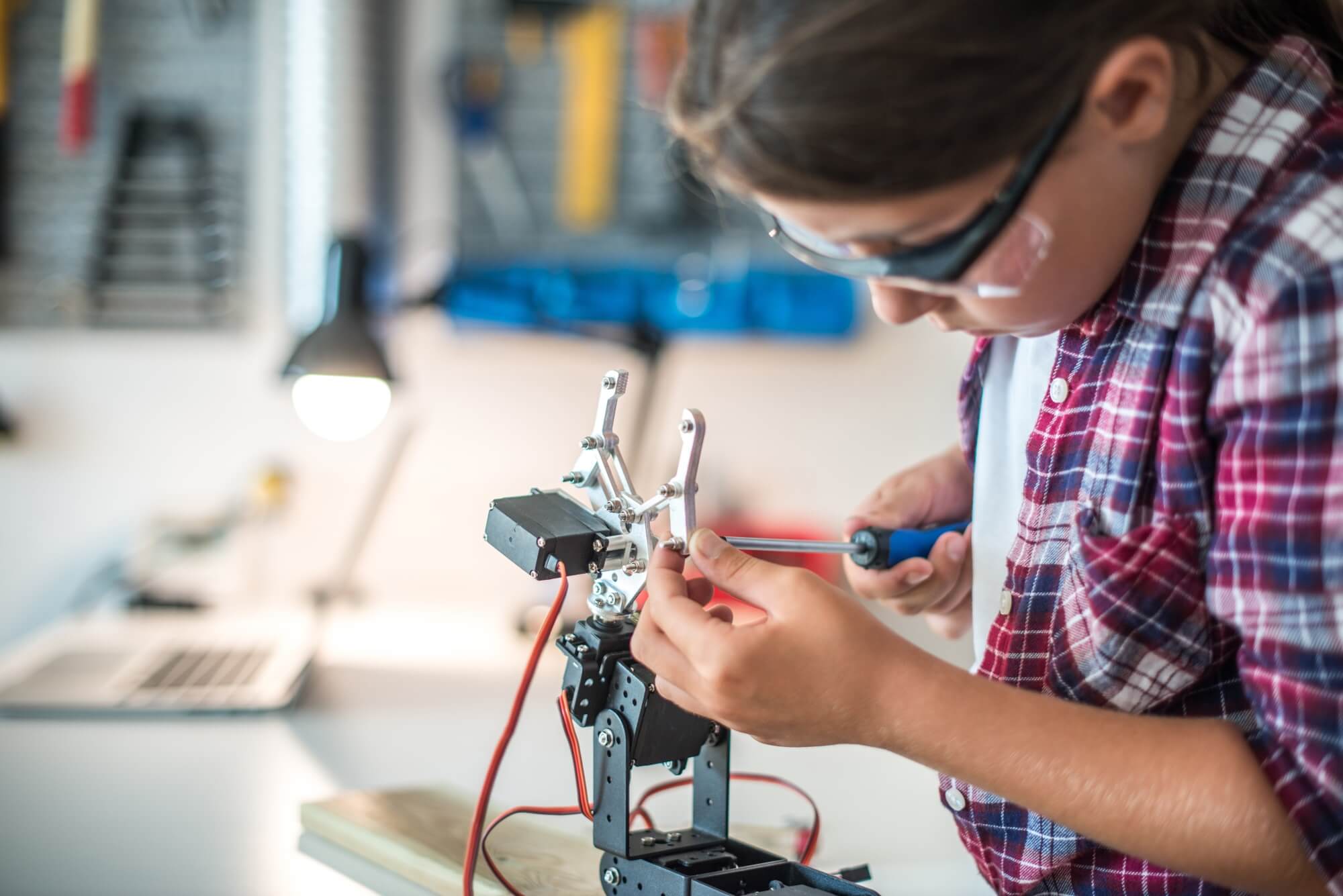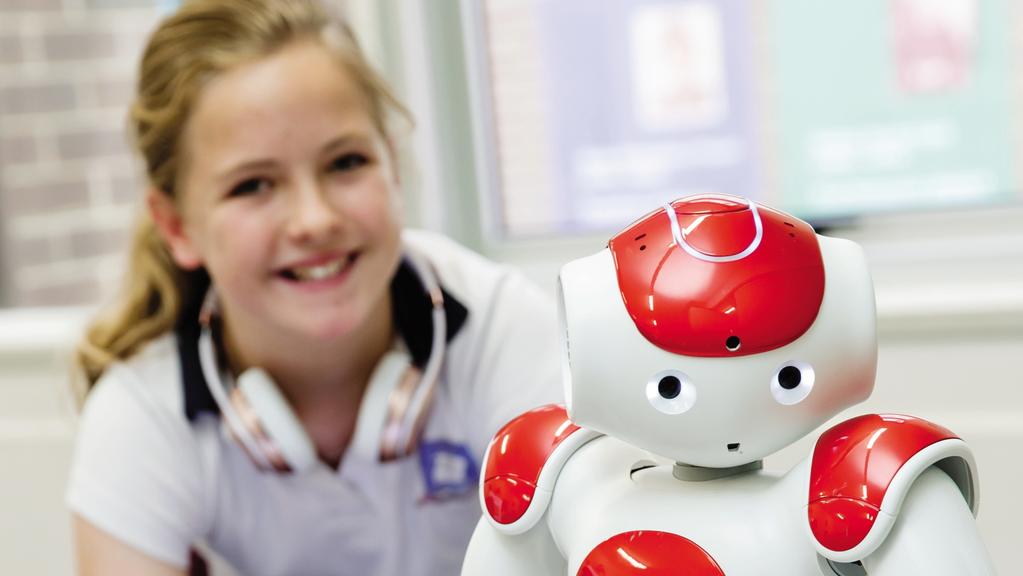Robots are hugely popular with kids. Want proof? Four of the 20 best-selling toys on Amazon during the 2018 holiday season were robots, robotics kits, or other electronic circuitry kits. So it’s not surprising that K-12 educators would turn to robotics as a way to get students excited about science, technology, engineering, arts, and math (STEAM) education.

Worldwide, schools spent $146.5 million on robotics products and curricula in 2018, and this figure is expected to grow annually by 28 percent through 2023, reaching $640.5 million by that time. Some of the many companies that sell robotics kits to schools include LEGO Education, Pitsco Education, Sphero, Ozobot, Modular Robotics, VEX Robotics, and BirdBrain Technologies.
Reasons for this surge
Why is the K-12 robotics market exploding? Educators are finding that robotics is a great way to introduce STEAM skills and concepts to students of all ages.
For one thing, robotics helps bring STEAM concepts to life through engaging, hands-on learning opportunities. Students enjoy being creative, and building and programming their own robot to do simple tasks allows them to flex their creative muscles. Along the way, students are learning key concepts in math, physics, coding, and engineering, and they’re seeing how these principles apply within real-world scenarios—so their learning is more likely to stick.
Another reason for the surge in robotics education is that robotics is a rapidly growing industry. Integrating robotics into the curriculum exposes students to practical skills that could lead to a promising career.
The research firm McKinsey & Co. predicts that automation will have far-reaching consequences on the global workforce, with about 50 percent of current work activities becoming automated by 2030. An article in Forbes says robots soon will become increasingly commonplace in homes, from robotic companions for the elderly to robots designed to feed, play with, and care for pets when their owners are gone.
As robots replace a growing number of workers, there will still be plenty of career opportunities for those who know how to design, develop, and program them.
But even if students have no interest in an engineering or coding career, robotics teaches them essential skills that are broadly applicable. Designing, building, and programming robots helps students learn logic, problem solving, perseverance, computational thinking, and a host of other skills that are invaluable regardless of what career path they choose.
At the Dwight-Englewood School in New Jersey, third through fifth graders use EV3 and WeDo robotics kits from LEGO Education in science classes, and sixth graders complete a full robotics unit in science using the EV3 kits.
“I want my students to dive deeply into how things work,” says Technology Director Trevor Shaw. “I think that’s empowering for a lot of kids. Technology becomes something that they master and control rather than something they are dominated by, which is so often the case with kids and technology. Our goal is for kids to learn how to learn … and to doggedly figure out the information they need to imagine something into existence. That’s a really powerful experience for a student.”
Trends in robotics education
With tremendous growth in the marketplace, this is an exciting time for K-12 robotics. Here are three important developments in robotics education over the last few years.
1. Robotics instruction is now reaching early learners.
Research suggests that early exposure to STEAM learning is a key factor in whether students choose a STEAM-based career later in life. What’s more, young children are innately curious; with their propensity to take things apart and reassemble them to see how they work, they make natural scientists and engineers.
With these ideas in mind, several companies have come out with age-appropriate robotics kits that target students in the very earliest years of their education.
For instance, KinderLab Robotics’ KIBO is a screen-free robotics kit that enables children ages 4-7 to design, create, decorate, and bring their own robot to life. Edison is a programmable robot designed to teach coding and computational thinking skills to kids as young as four as well. And Eduscape’s Photon is a robot whose five visual apps allow even non-readers to start learning to code at age five.
“Now more than ever, it’s critical that we provide kids with an early on-ramp to STEAM learning—even earlier than we may have once thought—to prepare the workforce of tomorrow,” says Don Bossi, president of FIRST (For Inspiration and Recognition of Science and Technology).
2. Companies are trying to make robotics as accessible as possible for students—and teachers.
Two key barriers to integrating robotics into the general curriculum are cost and teacher capacity. Robotics manufacturers are taking several steps to reduce these barriers wherever possible.
Edison is one of many companies that offer supporting materials to teachers free of charge, such as lesson plans and guides that help teachers integrate the robots into instruction. BirdBrain Technologies also offers free tutorials for teachers, as well as a loaner program in which teachers can borrow classroom sets of the company’s Finch robot free of charge.
Putting actual robots in every student’s hands can pricey. Introducing students to robotics in a more easily scalable manner, the CoderZ platform gives students a cost-effective way to learn about coding and robotics without needing expensive equipment. Students use a game-like interface to program virtual robots as they aim to solve various challenges.
Because the program is offered online, students have access from any internet-connected device either from home or at school. And the threshold for introducing it is minimal. A survey of teachers whose students took part in the finals of last year’s Cyber Robotics Coding Competition organized by Intelitek, the company behind CoderZ, showed that more than 40 percent of teachers had no formal coding or robotics training.
3. New programs aim to reach underrepresented populations such as girls and minorities.
According to the National Center for Women and Information Technology, young women make up 56 percent of Advanced Placement test takers but only 19 percent of those who take the AP Computer Science exam—and just 18 percent of undergraduate computer science degrees are earned by women. Many robotics companies are trying to change this by engaging girls and other underrepresented populations in robotics.
During the 2019 International Society for Technology in Education (ISTE) conference earlier this year, Pitsco Education and SmartGurlz announced the launch of Smart Buddies, programmable robotic dolls (both male and female) that are accompanied by a curriculum focusing on increasing diversity awareness for third through fifth graders.
Many companies are also paying close attention to how their robotic devices are perceived and are trying to develop gender-neutral solutions. For instance, BirdBrain’s original Finch robot was designed to resemble a bird so that it would engage both boys and girls. Wired reports that Wonder Workshop tested the design of its gender-neutral robots, Dash and Cue, on boys and girls to make sure the devices appealed equally to both genders.
“It’s encouraging to see organizations take steps to reduce inequalities in access to STEM education,” Bossi says.
Robotics isn’t going to spark a passion for learning STEAM-based concepts in all students, Shaw concludes—“but it definitely will for some.”

Discover more about Robotics with RobotLAB!
Check our products page, and our learning platform Engage!K12 that offer a wide range of lessons for students and teachers! No robotics experience required.
